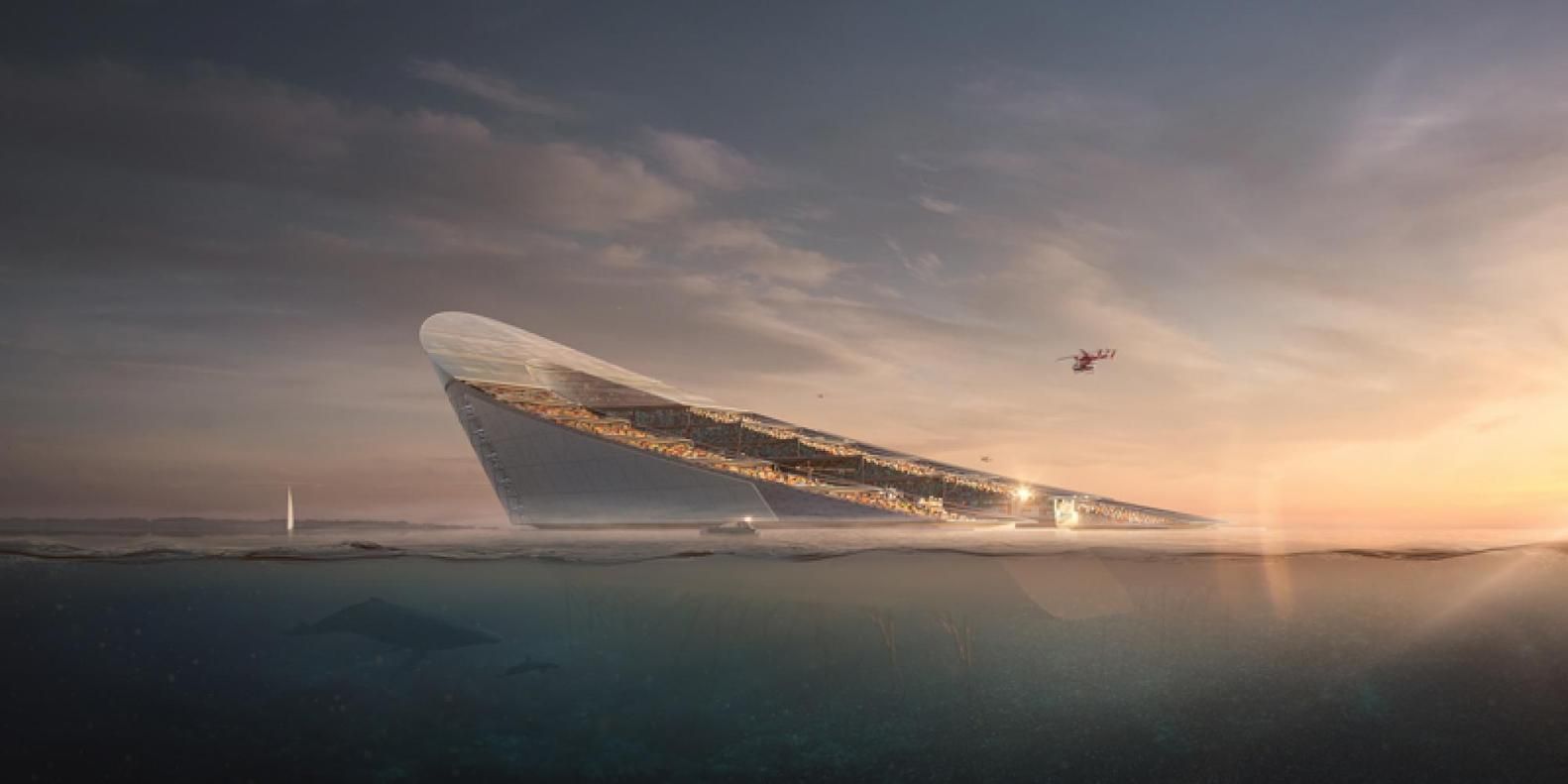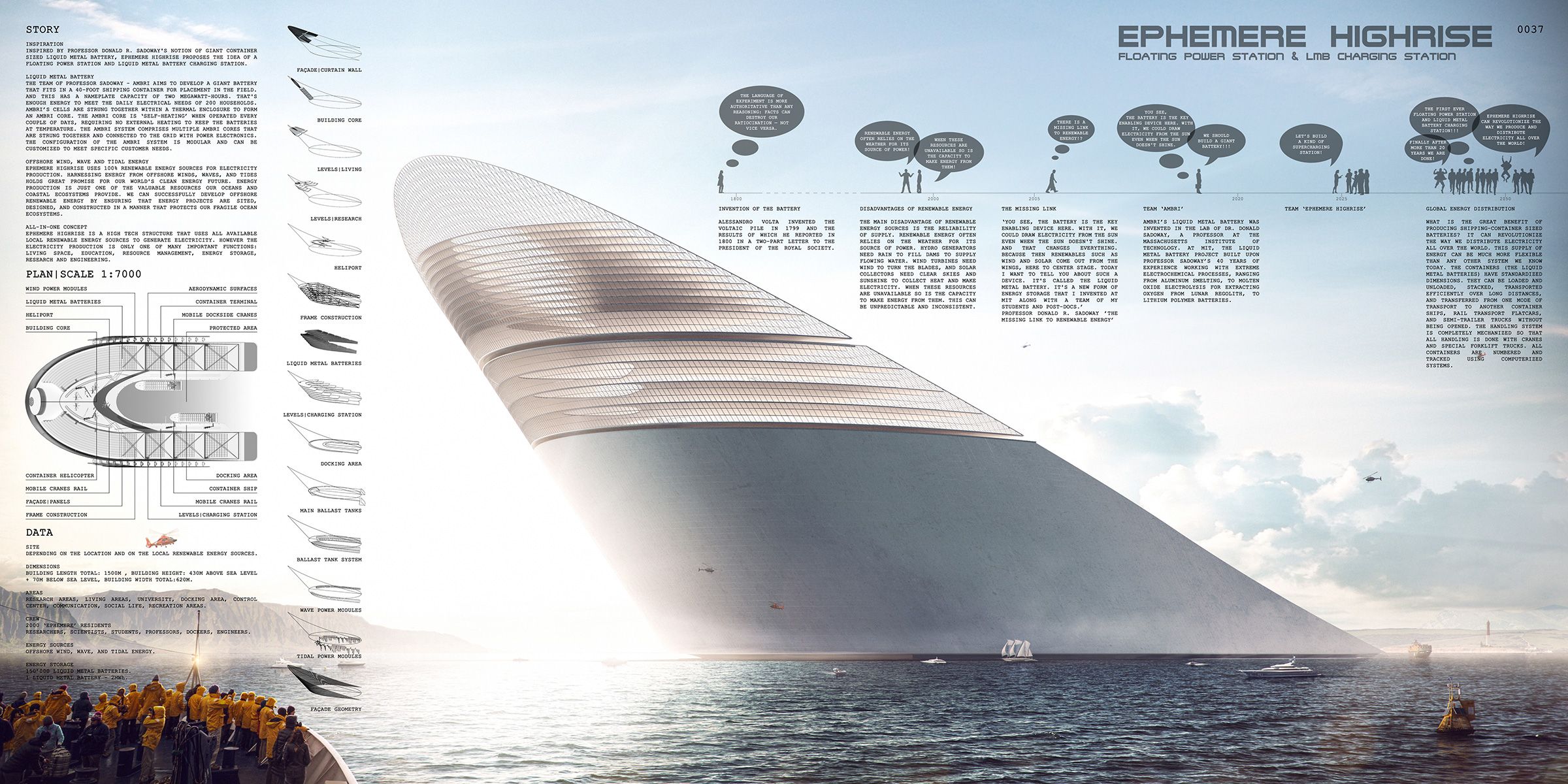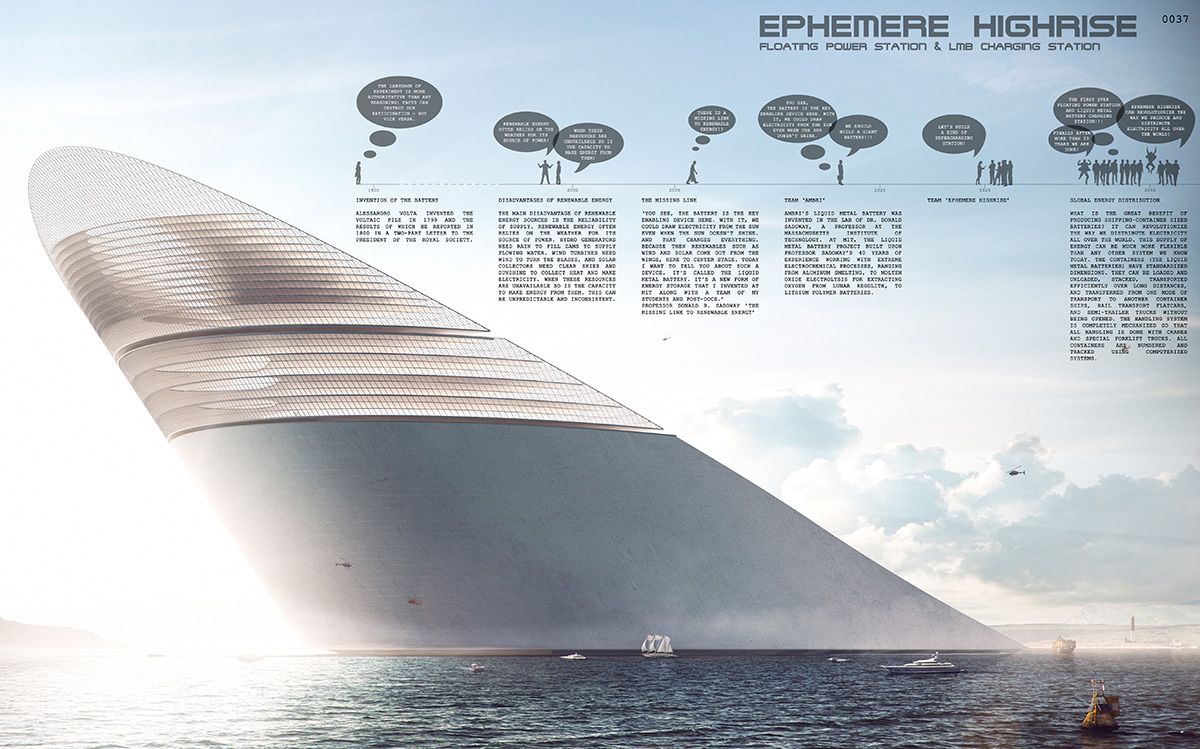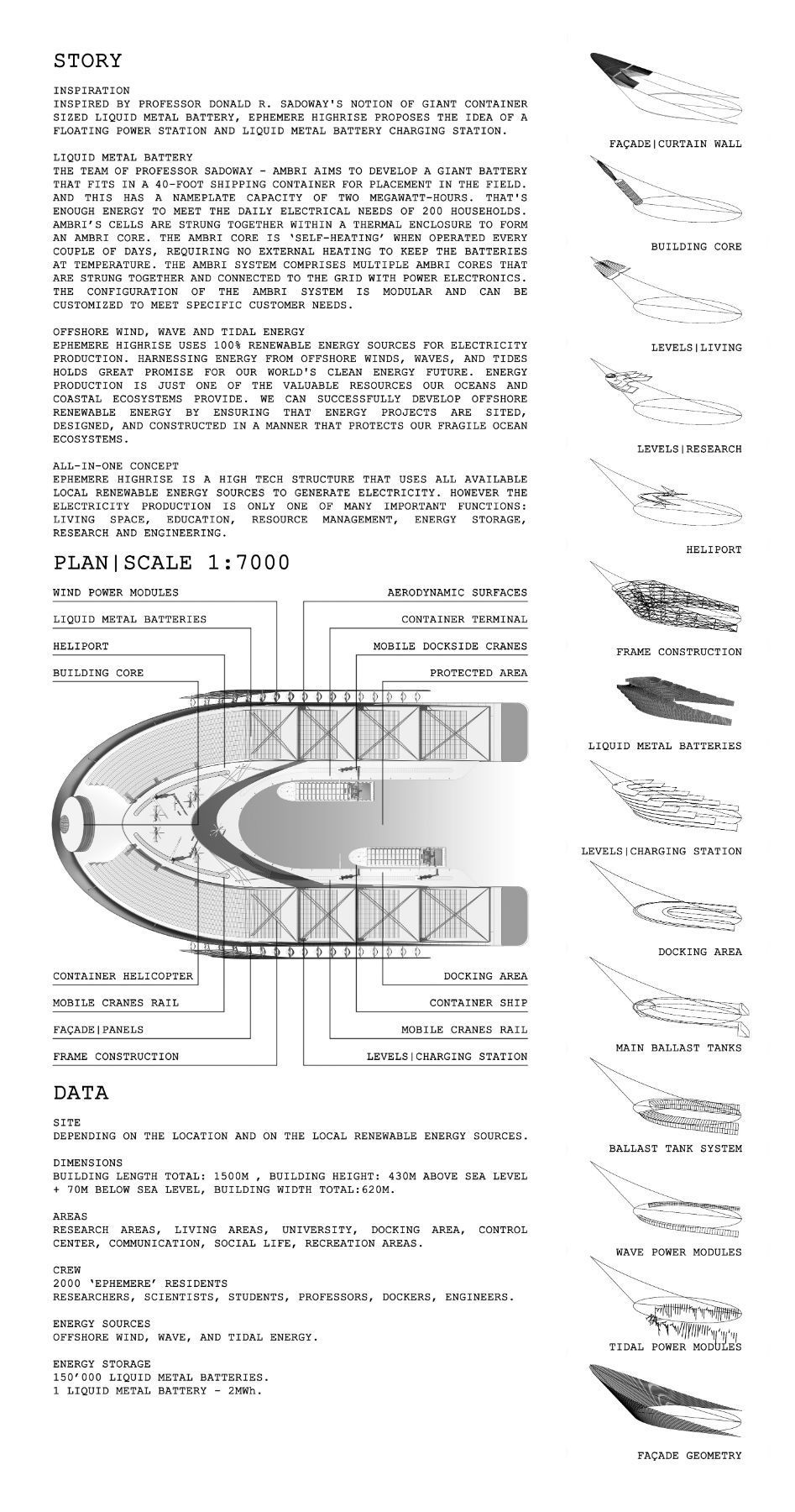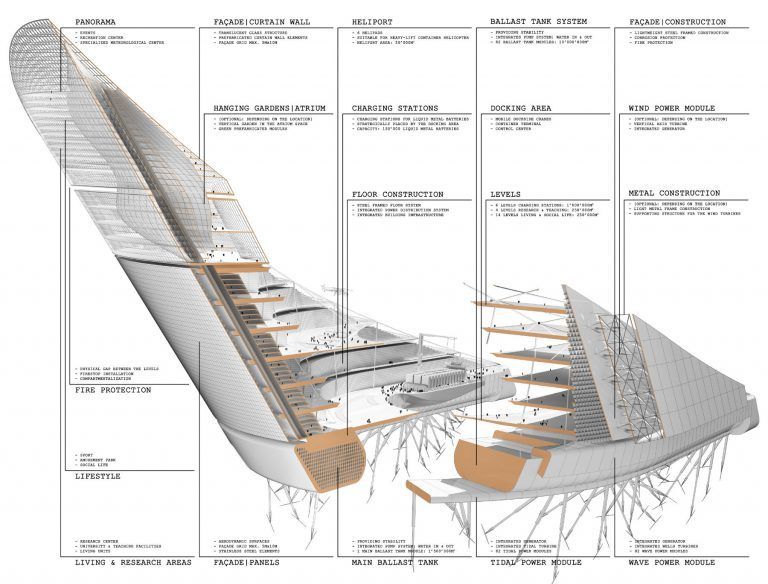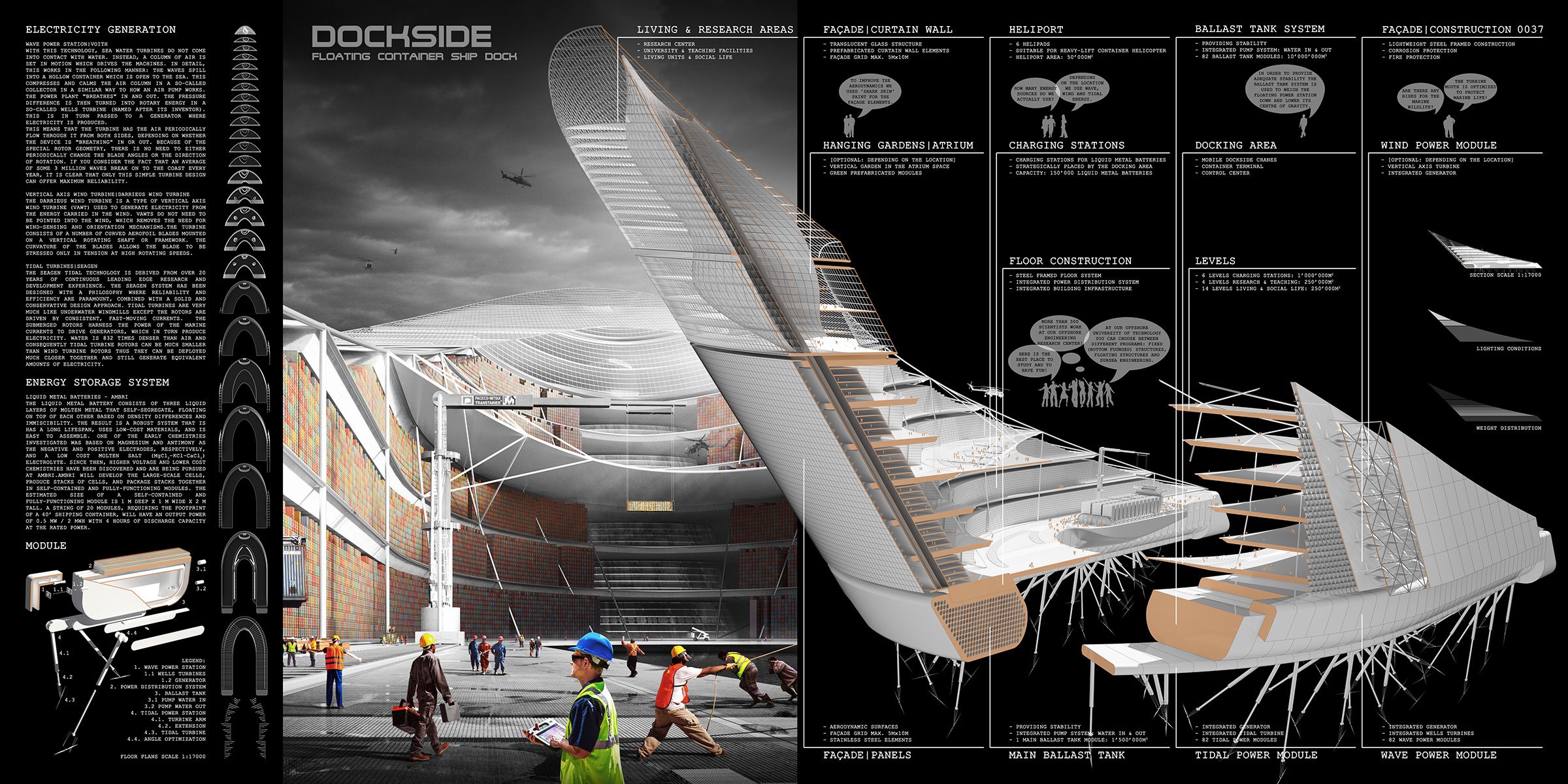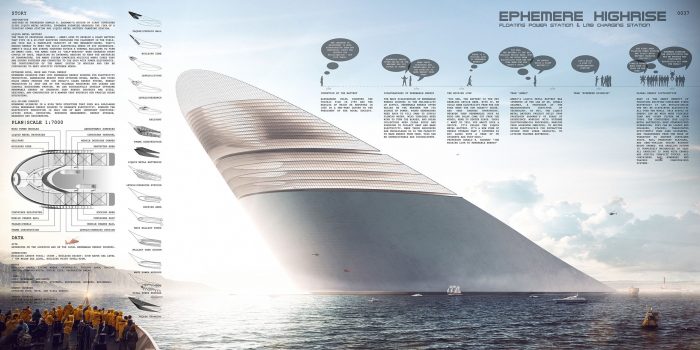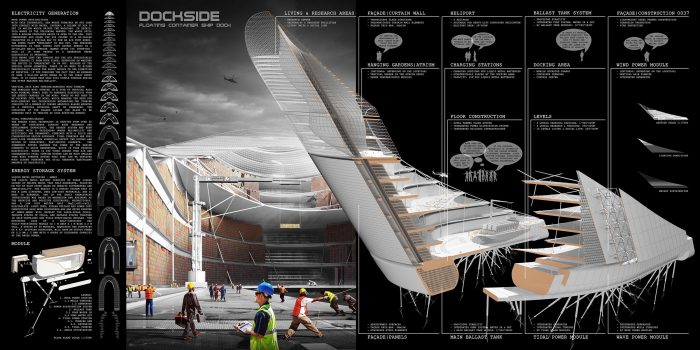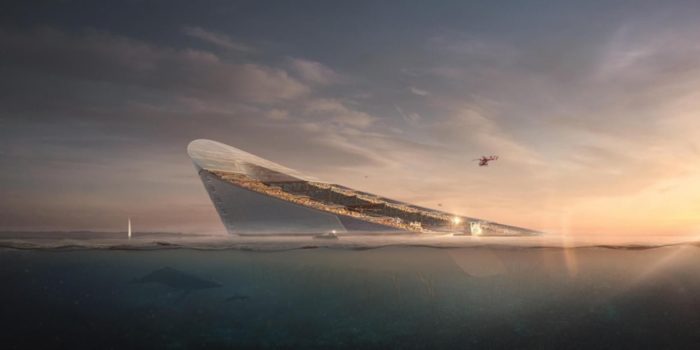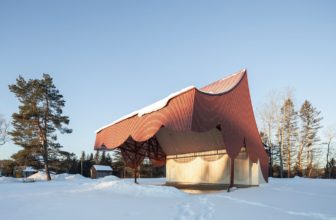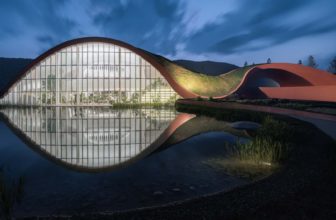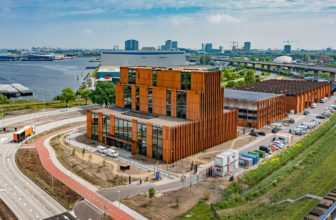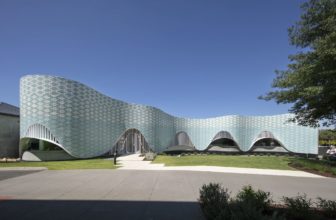Arch2O has received this project from our readers in order to participate in the Students week 9 event. In students week 10, STUDENTS will have the chance to create their own profile page in arch2o.com For more details please CLICK HERE
Inspired by Professor Donald R. Sadoway’s notion of giant container sized liquid metal battery, Ephemere Highrise proposes the idea of a floating power station and liquid metal batteries charging station.
3Liquid Metal Battery:
The team of Professor Sadoway – AMBRI aims to develop a giant battery that fits in a 40-foot shipping container for placement in the field. And this has a nameplate capacity of two megawatt-hours. That’s enough energy to meet the daily electrical needs of 200 households. Ambri’s cells are strung together within a thermal enclosure to form an Ambri Core. The Ambri Core is ‘self-heating’ when operated every couple of days, requiring no external heating to keep the batteries at temperature. The Ambri System comprises multiple Ambri Cores that are strung together and connected to the grid with power electronics. The configuration of the Ambri System is modular and can be customized to meet specific customer needs.
Offshore Wind, Wave and Tidal Energy:
Ephemere Highrise uses 100% renewable energy sources for electricity production. Harnessing energy from offshore winds, waves, and tides holds great promise for our world’s clean energy future. Energy production is just one of the valuable resources our oceans and coastal ecosystems provide. We can successfully develop offshore renewable energy by ensuring that energy projects are sited, designed, and constructed in a manner that protects our fragile ocean ecosystems.
All-in-One concept:
Ephemere Highrise is a high tech structure that uses all available local renewable energy sources to generate electricity. However the electricity production is only one of many important functions: living space, education, resource management, energy storage, research and engineering.
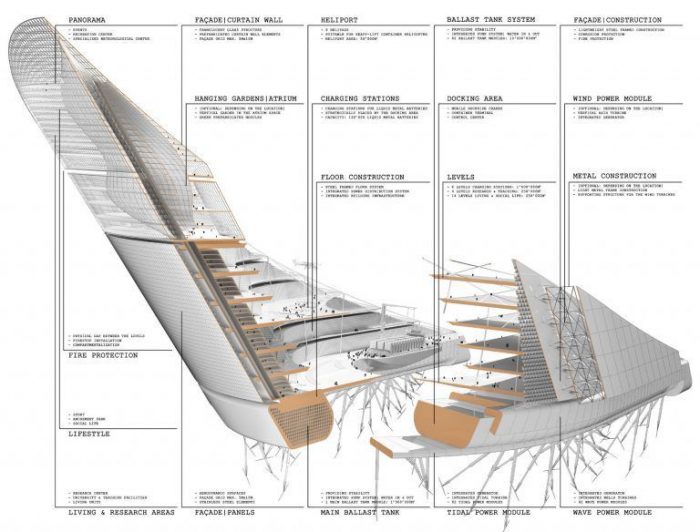 TECHNOLOGY – ELECTRICITY GENERATION
TECHNOLOGY – ELECTRICITY GENERATION
4Wave Power Station | Voith:
With this technology, sea water turbines do not come into contact with water. Instead, a column of air is set in motion which drives the machines. In detail, this works in the following manner: The waves spill into a hollow container which is open to the sea. This compresses and calms the air column in a so-called collector in a similar way to how an air pump works. The power plant “breathes” in and out. The pressure difference is then turned into rotary energy in a so-called Wells turbine (named after its inventor). This is in turn passed to a generator where electricity is produced.
This means that the turbine has the air periodically flow through it from both sides, depending on whether the device is “breathing” in or out. Because of the special rotor geometry, there is no need to either periodically change the blade angles or the direction of rotation. If you consider the fact that an average of some 3 million waves break on to the coast every year, it is clear that only this simple turbine design can offer maximum reliability.
5Vertical axis wind turbine|Darrieus wind turbine:
The Darrieus wind turbine is a type of vertical axis wind turbine (VAWT) used to generate electricity from the energy carried in the wind. VAWTs do not need to be pointed into the wind, which removes the need for wind-sensing and orientation mechanisms.The turbine consists of a number of curved aerofoil blades mounted on a vertical rotating shaft or framework. The curvature of the blades allows the blade to be stressed only in tension at high rotating speeds.
6Tidal turbines | SeaGen:
The SeaGen tidal technology is derived from over 20 years of continuous leading edge research and development experience. The SeaGen system has been designed with a philosophy where reliability and efficiency are paramount, combined with a solid and conservative design approach. Tidal turbines are very much like underwater windmills except the rotors are driven by consistent, fast-moving currents. The submerged rotors harness the power of the marine currents to drive generators, which in turn produce electricity. Water is 832 times denser than air and consequently tidal turbine rotors can be much smaller than wind turbine rotors thus they can be deployed much closer together and still generate equivalent amounts of electricity.
TECHNOLOGY – ENERGY STORAGE SYSTEM
2Liquid Metal Batteries – Ambri:
The Liquid Metal Battery consists of three liquid layers of molten metal that self-segregate, floating on top of each other based on density differences and immiscibility. The result is a robust system that is has a long lifespan, uses low-cost materials, and is easy to assemble. One of the early chemistries investigated was based on magnesium and antimony as the negative and positive electrodes, respectively, and a low cost molten salt (MgCl2-KCl-CaCl2) electrolyte. Since then, higher voltage and lower cost chemistries have been discovered and are being pursued at Ambri. Ambri will develop the large-scale cells, produce stacks of cells, and package stacks together in self-contained and fully-functioning modules. The estimated size of a self-contained and fully-functioning module is 1 m deep x 1 m wide x 2 m tall. A string of 20 modules, requiring the footprint of a 40’ shipping container, will have an output power of 0.5 MW / 2 MWh with 4 hours of discharge capacity at the rated power.
PROJECT DATA
Site: Depending on the location and on the local renewable energy sources
Dimensions:
Building length total: 1500m
Building height: 430m above sea level + 70m below sea level
Building width total: 620m
Areas:Research areas, living areas, university, docking area, control center, communication, social life, recreation areas
Crew:2000 ‘ephemere’ residents
Researchers, scientists, students, professors, dockers, engineers
Energy sources:Offshore Wind, Wave, and Tidal Energy
Energy storage:150’000 liquid metal batteries
1 liquid metal battery – 2MWh
Project Credits:
Second-Year Master’s Project, 2012-2013:
Students Name: Dimo Ivanov, M.Sc. RWTH
University: RWTH Aachen University, Faculty of Architecture
Project Optimization Credits: Several project updates, aerodynamic optimization, power stations optimization etc. 2015-2016: Dimo Ivanov, M.Sc. RWTH
Visualization Credits:FlyingArchitecture
